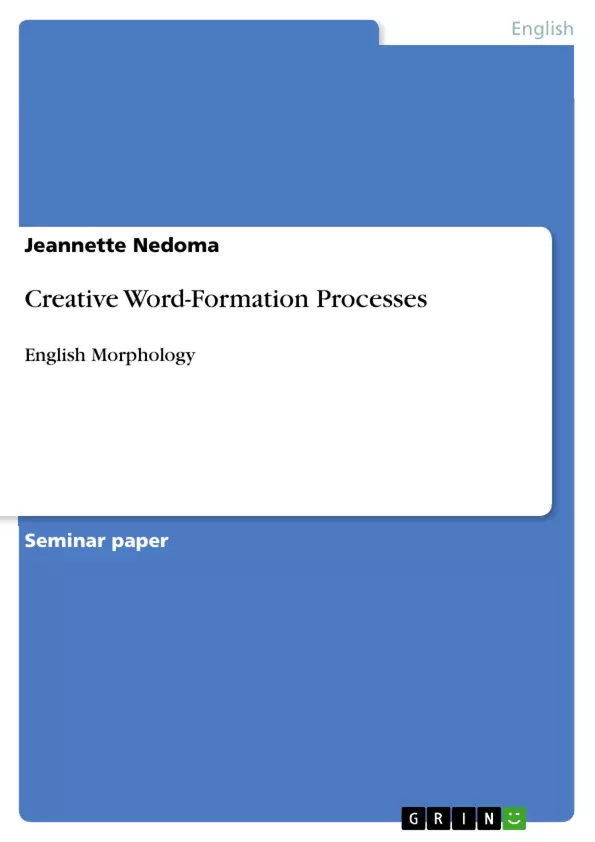1. Introduction
Word-formation could be found in languages all over the world. English could be seen as the most important source for other languages in every respect. A huge amount of English terms has been spread like wildfire to other countries. English seems to have a global influence on politics (English as official language), science and technology, computer, mobile phones and the Internet (e.g. technical terms), broadcasting, music (e.g. the majority of English songs on the “German radio” is obvious), film industries and cinemas (e.g. the majority of English movies or English movies in original speech in German cinemas).
Table of Contents
- Introduction
- Morphology in General
- Some Examples of "Creative" Processes in Word-Formation
- Affixational Processes
- Coinage
- Borrowing
- Compounding
- Blending and Telescoping
- Clipping, Acronyms and Backformation
- Conversion
- Reduplication
Objectives and Key Themes
This term paper examines the creative word-formation processes found in the English language. It aims to explore the various ways in which new words are created and incorporated into the language, highlighting the significance of these processes in shaping and evolving the English lexicon.
- The role of morphology in word-formation processes.
- Exploring various creative word-formation processes, including affixation, coinage, borrowing, and more.
- Analyzing the productivity and influence of these processes on the English vocabulary.
- Examining the phenomenon of English as a global language and its impact on other languages.
- Discussing the potential challenges and controversies associated with English borrowing and the spread of Anglicisms.
Chapter Summaries
The introduction establishes the context for the paper by highlighting the global influence of the English language and its impact on other languages. It discusses the importance of word-formation processes in understanding the evolving nature of the English vocabulary, particularly in light of its international usage.
Chapter two provides a brief overview of morphology, defining key terms and concepts such as free and bound morphemes, inflectional and derivational morphemes, and the importance of analyzing linguistic forms and word-formation processes in general.
Chapter three delves into various "creative" word-formation processes. It explores affixation in detail, focusing on the process of suffixation and its productivity in creating new adjectives. The chapter then introduces coinage as a process of inventing entirely new words, often associated with brand names and products. Borrowing, another important word-formation process, is discussed, highlighting the adoption of words from other languages and the resulting linguistic exchanges.
Keywords
Word-formation processes, morphology, affixation, suffixation, prefixation, coinage, borrowing, loan-words, productivity, English language, globalization, Anglicisms.
- Quote paper
- Jeannette Nedoma (Author), 2005, Creative Word-Formation Processes, Munich, GRIN Verlag, https://www.grin.com/document/126513



